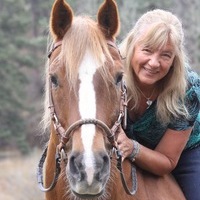
The Most Popular Horse Breeds Of 2019
Equestrian Advice & Guides General Equestrian
Build your business profile for FREE and expose your services to thousands of potential clients!
Create my profile now!
Whew! You’ve made it through the year with no pasture problems. All horses are safe and you escaped with no colics, no founders & no laminitis issues. Now it’s Fall, things are browning and dying and pasture time is no longer a concern. True or False?
Yeah. False. You knew that though, didn’t you?
We've all worried over putting our horses out to pasture in Spring since those young shoots are sweet and wonderful for horses, but have you ever thought about the Fall grasses and what the risk is at that time of year? Most people may not know, or just aren't concerned or worried about it since it's mostly brown by then. But sadly, that brownish pasture where you turn your horses out for the day is even more risky than the lush, green spring meadows.
Why? Well, it turns out that the spring grasses have the highest sugar content as we all expected, except for fall grasses. In spring, the plant is waking up and sending energy to the blade, instead of holding its precious carbs and starches in the roots; the plant is small, short in length and its roots are deep. The spring rains plump it up to its normal eighty-five percent water content and photosynthesis from the longer days increases the plant's growth and helps its energy production. This means that the now-green grass is super sweet, luscious and delicious and some horses won't pick their heads up until sometime mid-summer.
But what about the Fall grasses? The shortening day length, the longer nights of cooler weather (usually under 40 degrees Fahrenheit for many hours) causes that plant into protecting itself and it begins its last gasping breaths. This is due to the grass needing warm, light, wet conditions to thrive. Take away any of those factors and the blades stop undergoing photosynthesis, thereby turning brown and looking as if they are dying. So why is your pasture sweeter and yummier than in spring? Easy! All the carbs, sugars and energy are condensed near ground level. Horse comes grazing along and gets as much sugar in that little bite in fall than he would get in about three bites of long-bladed, green grass in spring. Less water, more sugars and starches.
Okay, that's the short simple version of the reason for fall grass to be more dangerous than spring flings in a beautiful green, lush meadow. What can you do about it?
Since you know the dangers of too much sugar and starch for horses with any metabolic issues (think Cushings) and you are fully aware of laminitis and founder potential, you already ease your horse onto pasture in the spring. You begin with 15 minutes a day for a week to 30 minutes, and so forth. But what about Fall grazing? How to do you manage that?
Remember that the life cycle of the grass is important--it's own biorhythms dictate when its at full-on steroidal capacity and when it’s lazy like a cat in the sun sleepy. It wakes up in the morning sluggish, with all its energy low. Then, as the day goes on and the sun shines down, photosynthesis kicks into high gear and energy production goes crazy. Once the sun sets and the cooler nights drag on, the plant once again goes to 'sleep' and energy production slacks off.
One caveat is this: Just because there might be a drought going on, or because your pasture looks brown, tor the day is cloudy, this does not mean the plant is not sweet and full of sugar. Turns out that the brown, thirsty plant is actually sweeter than the tall green one. Strange, but true. It condenses all that sugar it's producing into a small area. This is why horses can be seen grazing on what looks like dead stuff to us. So what does this mean for you and your horses?
Let them out at night, keep them off pasture during the day. This works at any time of year. Bonus is that if you have your horse in during the day and they stand in their shelter to get away from all the pesky flies, they don't fade as much so they look better, too!
Some Helpful Hints:
That’s the gist of Fall Grasses and what to watch for and why. If you want more in depth info, contact me directly at TanyaBuck.com and I’ll share other useful tidbits with you.
I almost forgot the free stuff. Want some? The short tips version of Trail Riding Tips here FREE! Available here:
https://lp.constantcontact.com/su/Qa0qA96/HorseClicks
If you’d prefer the full length, illustrated version, it’s available on my website, signed and delivered directly to your mail box!
TRAIL RIDING, HAPPILY EVER AFTER
** Does a spooking, nervous horse make the idea of trail riding nothing more than a wishful dream? Wish you could change things easily and with no stress so your horse would become the trail pro you envision?Here is a booklet for all equestrians; beginner through advanced, English or Western that includes tips on how best to trail-train your horse and navigate the outside world with ease. Includes a list of essential items to carry with you on any ride, long or short!
Coming soon, YOU AND YOUR HORSE, HAPPILY EVER AFTER, an essential guide to a happy relationship between horse and rider. Watch for FREE previews here!
Wishing you and your horse your own happily ever after,
~Tanya Buck

